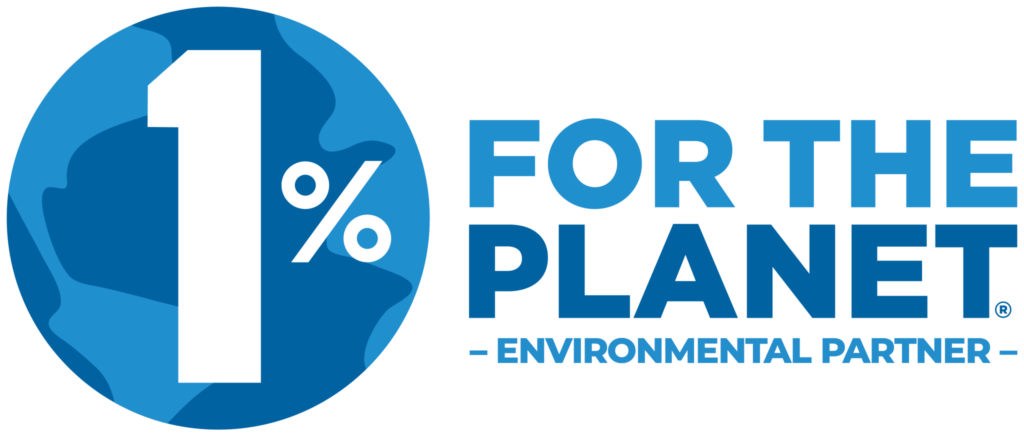California Children’s Environmental Health Profile
Did you know 89% of children under 18 in California live in counties with unhealthy levels of ozone pollution? Or that 3.3% of children under age 18 had Autism Spectrum Disorder (compared to the National average of 2.9%) in 2018-2019? There are 8.9 million children in California, and approximately 16% of them live in poverty. Poverty is an important social determinant of health; poverty hurts children and their families. Children of color and young children are disproportionately poor and experience many issues that lead to adverse health outcomes. All children deserve a safe and healthy environment to grow and develop.
This profile highlights key California children’s environmental health indicators, federal support received by the states for environmental health, health equity and climate and health programs, and a spotlight feature on a children’s environmental-health related topical issue.
Continue reading to learn more about environmental hazards, children’s exposures, and children’s health outcomes in California, or click the blue button to download the profile as a PDF.
Key Children’s Environmental Health Indicators for California
What is a Children’s Environmental Health Indicator?
California Spotlight: Climate Change and Health Vulnerability Planning Tool
The California Department of Public Health (CDPH) seeks to reduce and prevent adverse and inequitable physical and mental health impacts associated with climate change. With partial funding from the Centers for Disease Control & Prevention’s Climate Ready States and Cities Initiative, the CDPH Climate Change and Health Equity Section and its CalBRACE Project developed Climate Change & Health Vulnerability Indicators for California (CCHVIs) and an online interactive platform to visualize the data, CCHVIz, These tools assist with climate change planning and prioritizing actions to protect people most at risk, including children.
The CCHVIz displays three categories of indicators that influence vulnerability to health impacts of climate change: exposure indicators including heat, air quality,  wildfires, and sea level rise; population sensitivity indicators including children, elderly, poverty, education, outdoor workers, vehicle ownership, linguistic isolation, disability, health insurance, and violent crime rate; and adaptive capacity indicators including air conditioning ownership, tree canopy, and impervious surfaces.
wildfires, and sea level rise; population sensitivity indicators including children, elderly, poverty, education, outdoor workers, vehicle ownership, linguistic isolation, disability, health insurance, and violent crime rate; and adaptive capacity indicators including air conditioning ownership, tree canopy, and impervious surfaces.
The CCHVIz provides health officials and planners with an online snapshot to compare their county’s indicators to the state average. They can view risk by census tract for specific indicators, such as children under age 5, and their breakdown by race and ethnicity. The tool also plots the intersections of exposure indicators (e.g., ozone concentration) with sensitivity indicators (e.g., population under 5 years of age) to learn where children are susceptible to air pollution, extreme heat, wildfire, or other threats. The CCHVIz is an excellent resource for State and local officials in California to plan to prevent and prepare for climate change-related health impacts to young children, especially children of color and children in under-resourced communities.
Federal Support to California within the past 5 years
Children’s Environmental Health Indicators Selection Criteria
Children’s environmental health indicators (CEHIs) are measures that can be used to assess environmental hazards, exposures, and their resulting health outcomes in children. The below criteria are used when determining which indicators to utilize:
-
- Relevance: Each headline indicator should be a clear, understandable indicator of children’s environmental health, with broad relevance for a range of audiences at the state level – with relevance to the national level.
- Representativeness: The indicators as a package should provide a representative picture of children’s health and relation to the environment.
- Traceability: Each indicator should be calculated using an agreed-upon (and published) method and accessible and verifiable data.
- Timeliness: Each indicator should be calculated regularly (at least biennially), with a short lag between the end of the period and publication of the data.
- Data adequacy: The available data needed for the indicator must be sufficiently robust, reliable and valid.
- Universality: Indicators must be comparable across all or very nearly all 50 U.S. states. [/expand]
Indicator Notes and References
Safe Drinking Water
Air Quality
- Indicator Note: In this fact sheet, counties with “unhealthy” ozone pollution are those receiving a grade of D or F for ozone pollution in the American Lung Association’s 2021 State of the Air report. Approximately 43,082 California children live in counties where ozone pollution is not monitored for which there is less than 3 years of data.
- Reference: Ozone Pollution. American Lung Association. 2021 State of the Air. Report card: California. Data from U.S. Environmental Protection Agency’s Air Quality System. Accessed June, 2021.
Warming Temperature
- Indicator Note: Warming matters — it drives most of the hazards associated with climate change such as extreme weather, heat days, droughts and heavy downpours. Children are more vulnerable to harm from extreme heat and to the other cascading effects of warming temperatures.
- Reference: AMERICAN WARMING: NOAA National Centers for Environmental Information, Climate at a Glance: Statewide Time Series, retrieved July 2021 from https://www.ncdc.noaa.gov/cag/.
Toxic Chemicals
- Indicator Note: EPA’s Toxics Release Inventory (TRI) tracks the management of certain toxic chemicals that may pose a threat to human health and the environment. Certain industrial facilities in the U.S. must report annually how much of each chemical is disposed of or released on and off site. Many of these chemicals are known carcinogens, developmental toxicants, and neurotoxicants, such as arsenic, lead and mercury, that adversely impact children’s health.
- Reference: Summary of 263 Toxic Release Inventory Facilities in California. Reporting Year 2019. Accessed June, 2021.
Neurodevelopmental Disorders
- Indicator Note: Mounting scientific research links environmental exposures with risk of Attention-Deficit Hyperactivity Disorder (ADHD). Attention-Deficit Disorder (ADD) and Autism Spectrum Disorder (ASD). Neither genetics nor changing diagnosis or other artifacts fully account for the increased incidences of these conditions. ADHD, ADD and ASD data are for California children aged 3-17 ages.
- Reference: ADHD, ADD, and ASD prevalence. 2018-2019 National Survey of Children’s Health. Title V Maternal and Child Health Services Block Grant National Performance and Outcome Measures. Prevalence of current ADD or ADHD, age 3-17 years; and Prevalence of current Autism or Autism Spectrum Disorder (ASD), age 3-17 years. Data Resource Center for Child and Adolescent Health. Maternal and Child Health Bureau, Health Resources and Services Administration. Accessed June,2021.
Asthma
- Indicator Note: A wealth of research links exposure to poor outdoor air quality, including high concentrations of ground-level ozone, with the exacerbation of children’s respiratory illnesses, including asthma. Several studies link it with the onset of childhood asthma.
- Reference: Asthma prevalence. 2018-2019 National Survey of Children’s Health. Title V Maternal and Child Health Services Block Grant National Performance and Outcome Measures. Prevalence of current asthma, age 0-17 years. Data Resource Center for Child and Adolescent Health. Maternal and Child Health Bureau, Health Resources and Services Administration. Accessed June,2021.
Pediatric Cancer
- Indicator Note: Although cancer in children is rare, the rate of pediatric cancer has been increasing since the 1970s. It is the leading disease related cause of death past infancy in U.S. children, Neither genetics nor improved diagnostic techniques can explain the increased rate. According to the President’s Cancer Panel’s 2008-2009 Annual Report, “the true burden of environmentally induced cancer has been grossly underestimated”
- Reference: California Childhood Cancers Incidence Request for children age 0-19. Age-adjusted rate for 2005-2015. Centers for Disease Control and Prevention. Wide-ranging Online Data for Epidemiologic Research (WONDER). Accessed June, 2021.
Blood Lead Levels
- Indicator Note: TCA 2018 BLL data is from the California Department of Public Health, and the 2018 Nationwide BLL is from CDC’s NCEH website. Often the most vulnerable children are not tested, and not all who are tested get reported, so these values are likely an underestimate of the true scope of children’s elevated BLL in California. There is no safe level of lead exposure for children. A potent neurotoxicant, lead reduce IQ and impairs other cognitive, behavioral and developmental functions. In 2021, CDC lower the BLL reference value from 5 to 3.5µg/dL.
- Reference:
- National Childhood Blood Lead Surveillance Data. Centers for Disease Control and Prevention. Accessed June, 2021. For CA 2015 data: California Department of Public Health. Childhood Lead Poisoning Prevention Branch. https://www.cdph.ca.gov/Programs/CCDPHP/DEODC/CLPPB/CDPH%20Document%20Library/BLL_Counts_2015_by_LHD.pdf
- Environmental exposures contribute to ADHD/ADD, ASD, and asthma. NIEHS/EPA Children’s Environmental Health and Disease Prevention Research Centers. 2017 Impact Report.
- President’s Cancer Panel. 2008-2009 Annual Report. Reducing Environmental Cancer Risk. National Cancer Institute, National Institutes of Health.
- Under-testing and Under-reporting of children’s blood lead levels. Assessing Child Lead Poisoning Case Ascertainment in the US, 1999–2010. Eric M. Roberts, Daniel Madrigal, Jhaqueline Valle, Galatea King and Linda Kite. Pediatrics April 2017, e20164266; DOI: https://doi.org/10.1542/peds.2016-4266.
Poverty
- Reference:
Federal Support to California
- References:
- CDC Childhood Lead Poisoning Prevention. California. Accessed September, 2021.
- ATSDR State Cooperative Agreement Program. APPLETREE map. Accessed on June, 2021.
- CDC National Asthma Control Program. Accessed June, 2021.
- CDC Environmental Public Health Tracking Network. California Tracking Program. Accessed June, 2021.
- CDC State Biomonitoring Programs. Accessed June, 2021.
- California Building Resilience Against Climate Effects (CALBRACE). https://www.cdph.ca.gov/Programs/OHE/Pages/CC-Health-Vulnerability-Indicators.aspx# Accessed August 2021.
California Spotlight”]
- References:
- Climate Change & Health Vulnerability Indicators for California (CCHVIs). https://skylab.cdph.ca.gov/CCHVIz/ Accessed August 2021.
- CDPH Climate Change and Health Equity Section
- CalBRACE Adaptation Toolkit
- Emergency Responses. 2021. Michigan PFAS Action Response Team. Michigan.gov.
- State-by-State Regulation of PFAS Substances in Drinking Water. 2021. BCLP Law.
- Michigan’s new PFAS rules: 5 things to know. Bridge Michigan. (2021).
All children deserve and need a safe and healthy environment to grow and develop. They need clean air to breathe, safe water to drink, nutritious food to eat, and healthy places in which to live, learn, and play. Early exposure to harmful agents can lead to acute and chronic adverse outcomes. Infants and children are especially vulnerable to environmental exposures because they breathe, eat and drink more, in proportion to their body size, than do adults, and because their bodies and brains are still developing.
A blueprint for Protecting Children’s Environmental Health Network set out to identify a set of CEHIs that can be used to provide an understanding of children’s environmental health at the state level. Through this process, CEHN found that robust, valid, and regularly updated state level data–that are comparable across most states–were not readily accessible. States need adequate funding and capacity to collect and make accessible reliable CEHI data in order to set goals and track progress towards improving children’s health.
Children are our future – society has a moral obligation to protect them. Exposure to environmental hazards can and must be prevented. Prevention requires strong environmental regulations, fully funded and supportive public and environmental health programs and a robust workforce.
Jump to Another State







